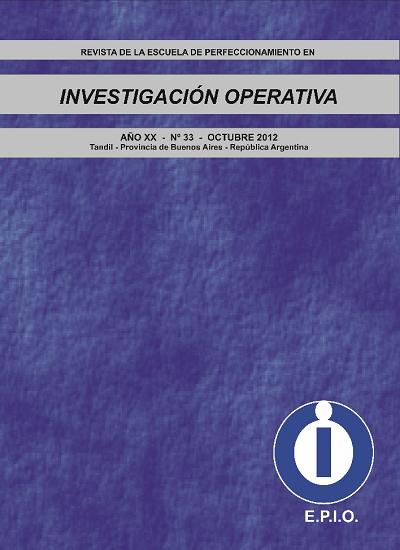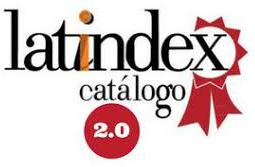Treatment and resolution of a problem of linear programming with random resources
Keywords:
linear programming, simulation, programmingAbstract
This work treats and proposes a method to solve a linear programming problem in which resources availability is unknown, although it is known or can be determined the probability distribution expected of them. The resolution is performed through the use of linear programming and the generation of simulations of discrete variables, both tools of Operations Research -ORrelated through computer programming.
The result achieved is the development of an algorithm to solve this problem, which has particular characteristics. Finally, certain issues arise in which the OR academic can keep on working.
Downloads
References
ACKOFF, R. L. y SASIENI, M.W. (1968).“Fundamentals of OperationResearch”. New York, Wiley.
ALAVI y LEIDER. (1999). “Knowledge Management and Knowledge Management Systems: Conceptual Foundations and ResearchIssues”
workingpapers, INSEAD R&D 99/34/TM,.
BILES, W. E. y SWAIN, J. J. (1980). “Optimization and industrial experimentation”. Wiley-Interscience Publication.
CAMPOS, L y VERDEGARAY, J. L. (1989). “Modelos auxiliares para problemas de programación lineal con coeficientes imprecisos en las restricciones”. Trabajos de Investigación Operativa. Volumen 4. Número 1. Pp 21 a 38.
DUBOIS, D. y PRADE, H. (1980). “Fussy sets and systems: Theory and aplications”. Mathematics in Science and Engineering. Volume 144. ISBN 0-12-222750-6.
FERNÁNDEZ BARBERIS, G. M. y ESCRIBANO RÓDENAS, M. del C. (2003). “El análisis de la robustez y la ayuda a la decisión multicriterio discreta”. XVII ASEPELT. Anales de Economía Aplicada. http://www.asepelt.org/ficheros/File/Anales/2003%20-%20Almeria/asepeltPDF/18.PDF
JENSEN, P. (2004) “Operations Research Models and Methods”. Internet. http://www.me.utexas.edu/jensen/ORMM/index.html
LEKUBARRI, I. y EGUZKITZA, J. M. (2003) “Programación lineal con Excel: estabilidad de la solución”. Revista Sigma Nº 23.
MAROTO ALVAREZ, C; ALCARAZ SORIA, J.y RUIZ GARCIA, R. (2002). “Investigación Operativa: métodos y técnicas de optimización”. Editorial
Universidad Politécnica de Valencia.
MORA, W. y ESPINOZA, J. L. (2005). “Programación Visual Basic (VBA) para Excel y Análisis Numérico”. Escuela de Matemática. Instituto
Tecnológico de Costa Rica.
PELUFFO A. M. B. y CATALÁN CONTRERAS, E. (2002). “Introducción a la gestión del conocimiento y su aplicación al sector público”. Instituto
Latinoamericano y del Caribe de Planificación Económica y Social – ILPES, CEPASL, Santiago de Chile.
PEREZ GONZÁLEZ, L. O.(2006). “Microsoft Excel: una herramienta para la investigación”. Revista electrónica de las Ciencias Médicas en
Cienfuegos.ISSN: 1727-897X.
VICENS SALORT, E.; ÓRTIZ BAS, A. y GUARCH BERTOLÍN, J. J. (1997). “Métodos Cuantitativos. Volumen I”. Colección Libro Docente.
Editorial Universidad Politécnica de Valencia. ISBN: 84-7721-543-8.
Downloads
Published
How to Cite
Issue
Section
License
Atribución — Usted debe dar crédito de manera adecuada, brindar un enlace a la licencia, e indicar si se han realizado cambios. Puede hacerlo en cualquier forma razonable, pero no de forma tal que sugiera que usted o su uso tienen el apoyo de la licenciante.
NoComercial — Usted no puede hacer uso del material con propósitos comerciales.
CompartirIgual — Si remezcla, transforma o crea a partir del material, debe distribuir su contribución bajo la misma licencia del original.







